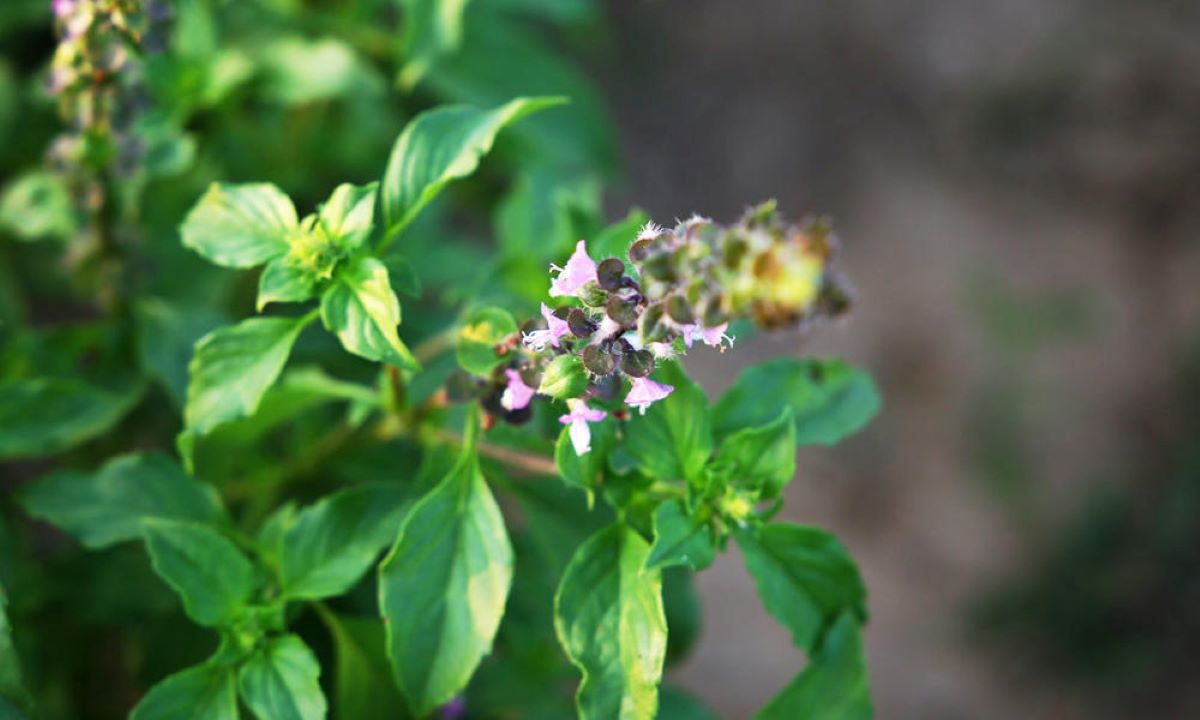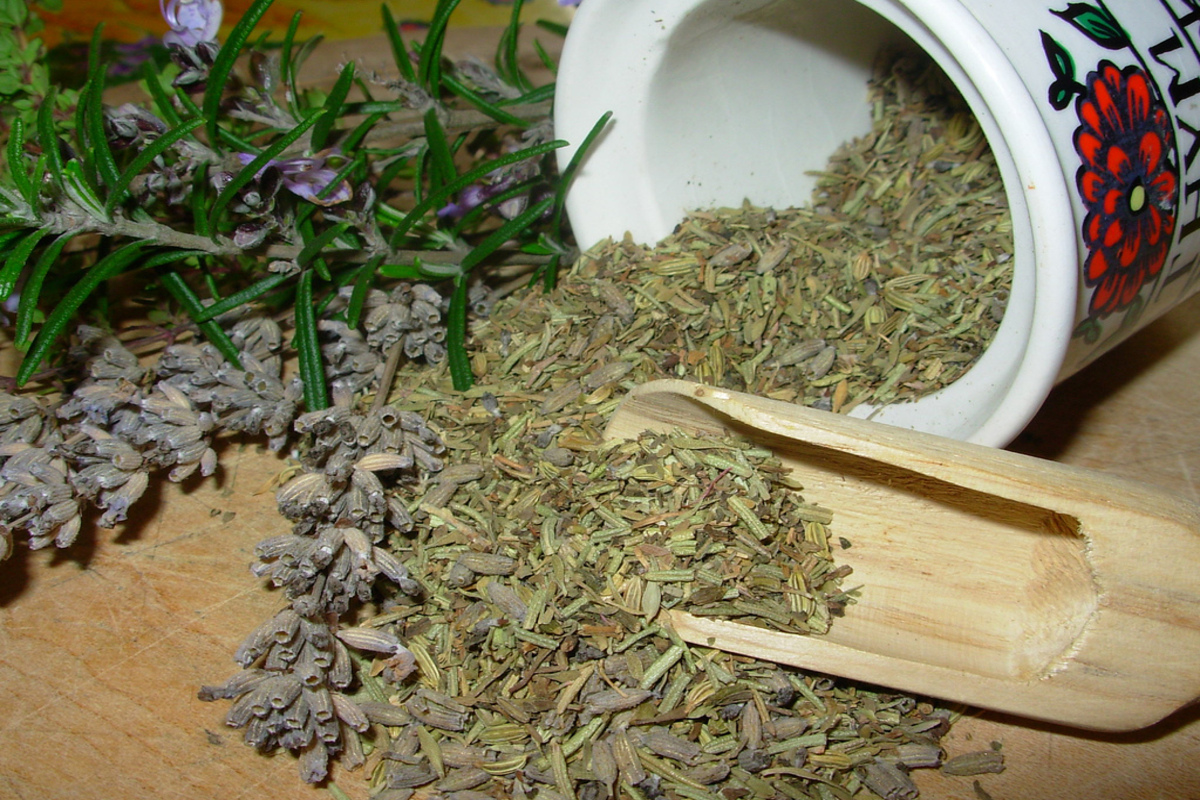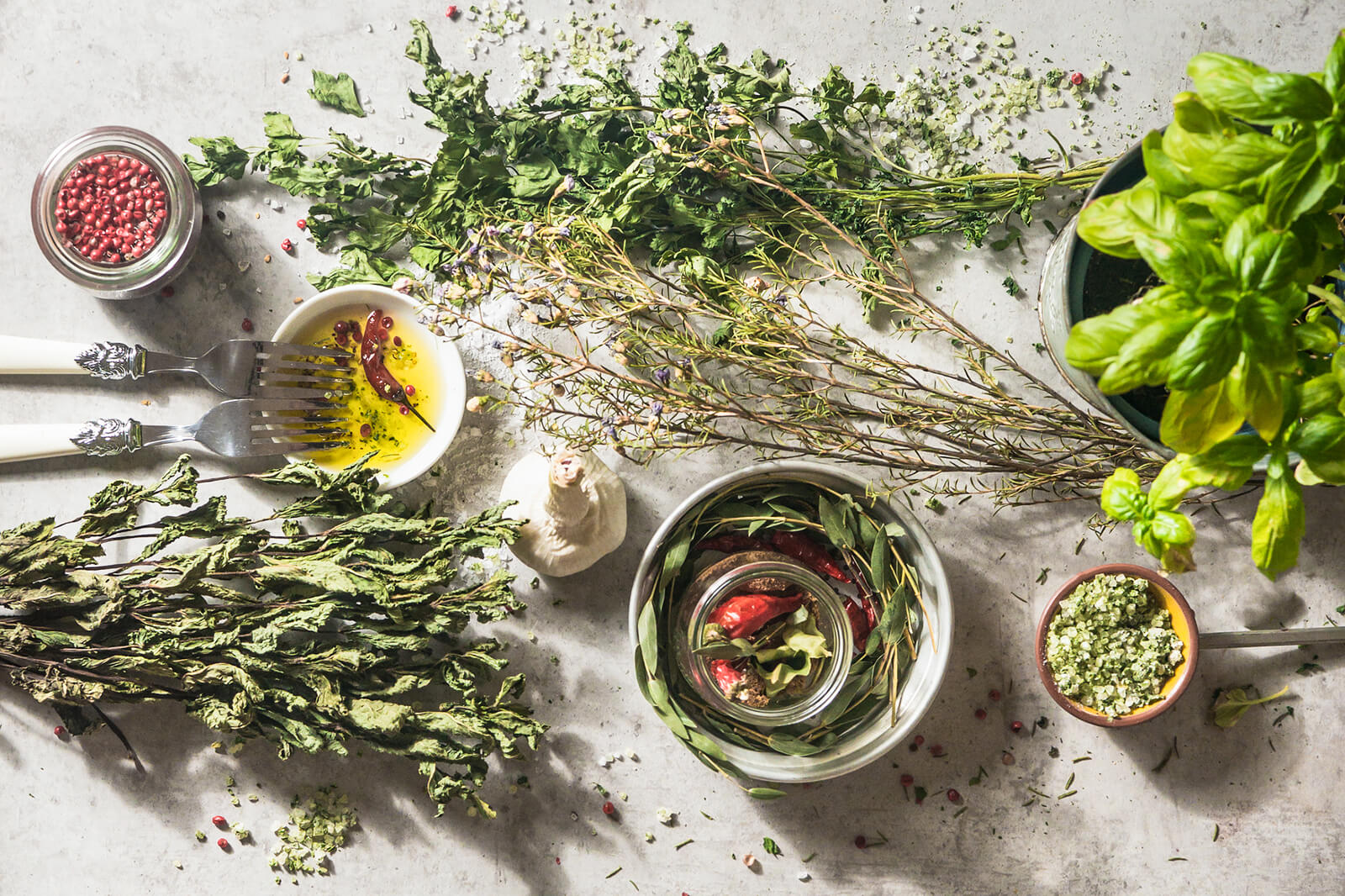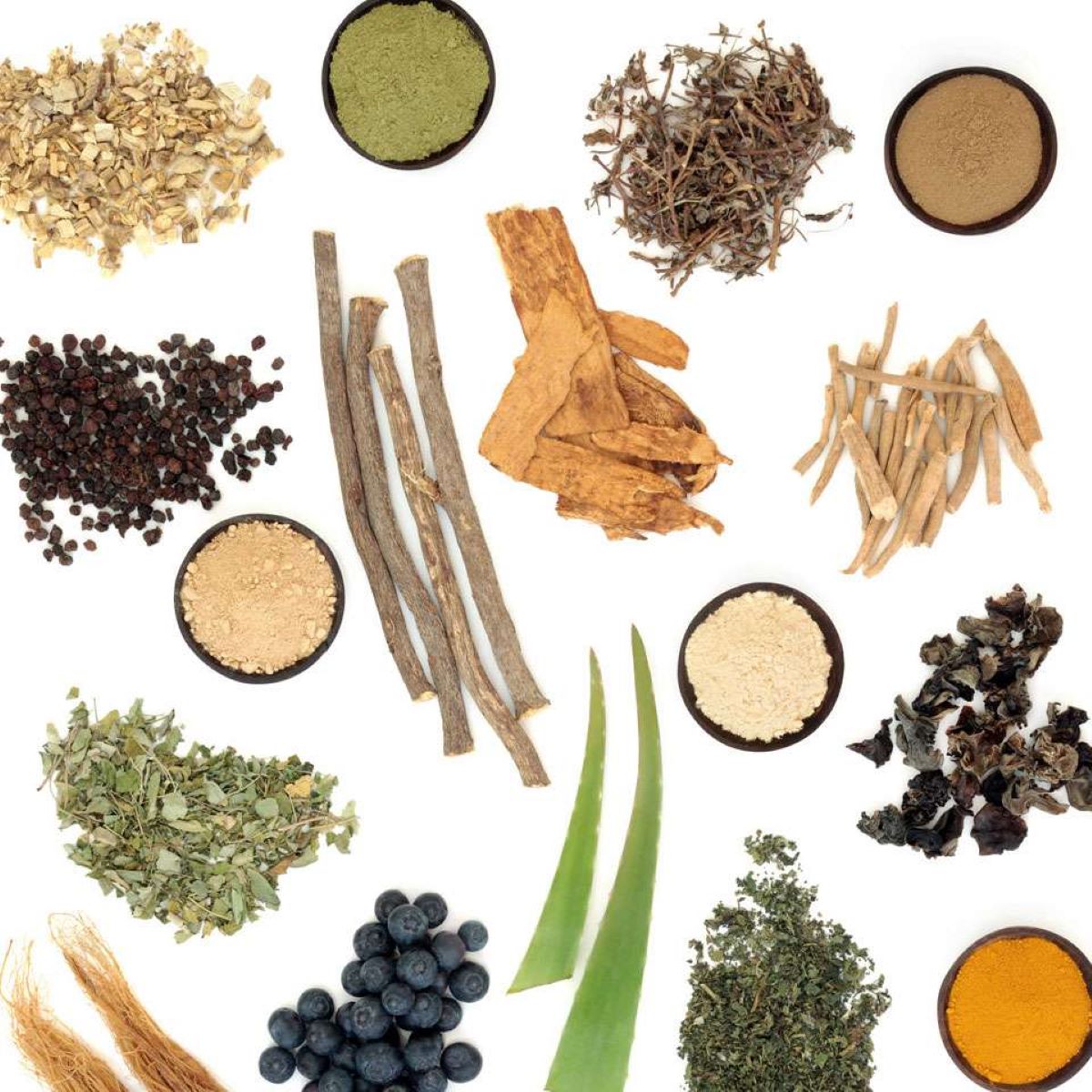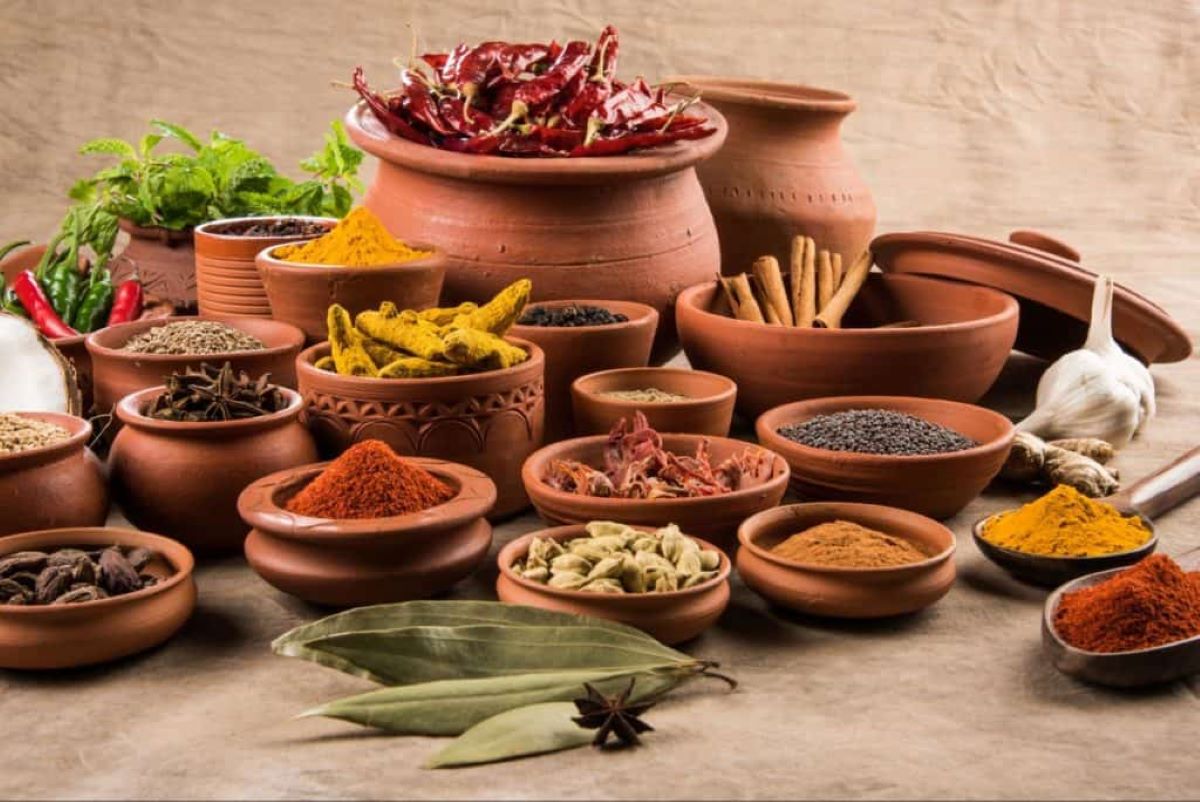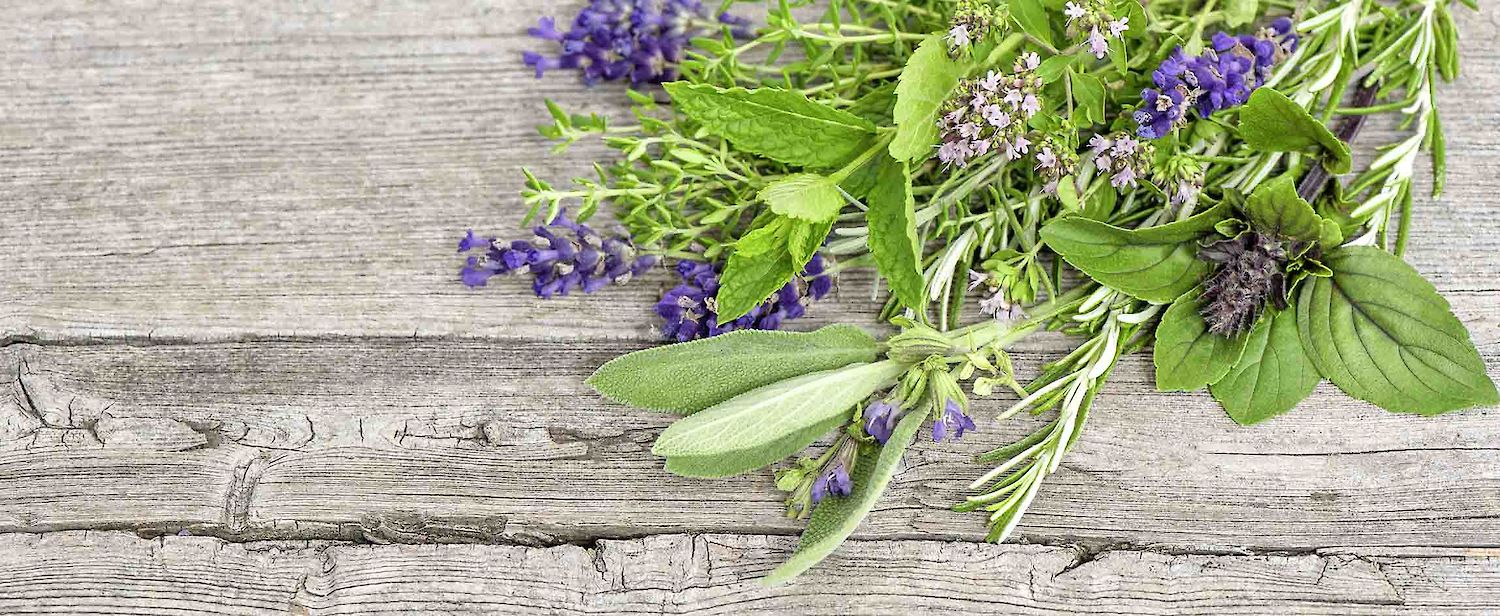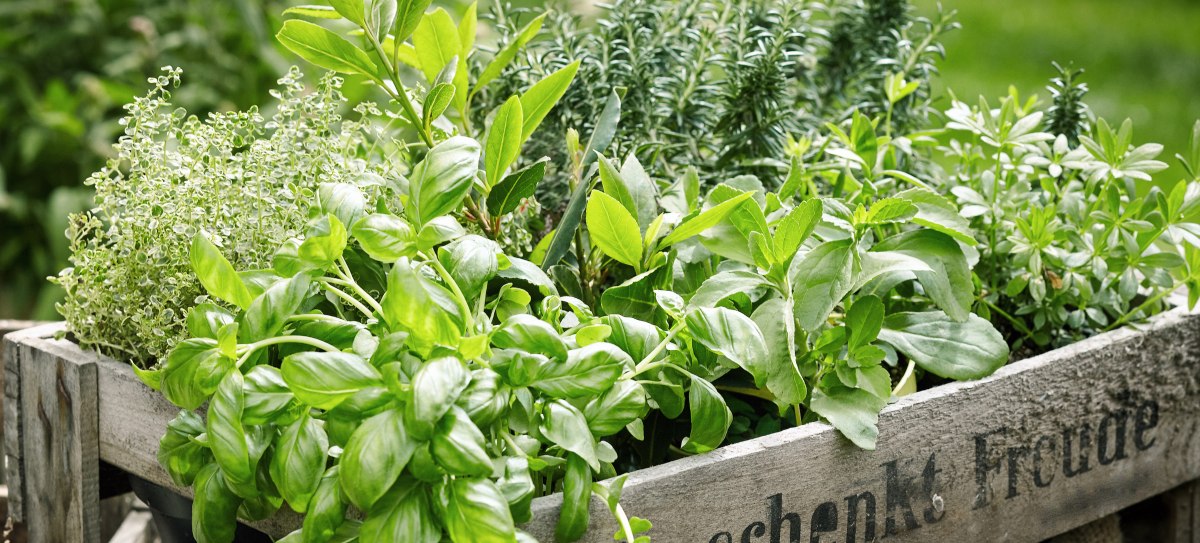Home>Gardening News and Trends>Gardening Trends>What Herbs For Steak


Gardening Trends
What Herbs For Steak
Modified: January 22, 2024
Discover the latest gardening trends and learn about the best herbs to elevate your steak dishes. Enhance your garden and culinary skills with these essential herbs for steak preparation.
(Many of the links in this article redirect to a specific reviewed product. Your purchase of these products through affiliate links helps to generate commission for Chicagolandgardening.com, at no extra cost. Learn more)
Table of Contents
What Herbs for Steak
Steak is a classic dish that can truly be elevated with the right combination of herbs. The herbs you choose to accompany your steak can enhance its flavor and add a burst of freshness to each bite. Whether you’re grilling, pan-searing, or oven roasting your steak, there are several herbs that pair exceptionally well with this hearty meat. Here are some top herbs to consider when preparing steak:
Rosemary
Rosemary is a popular herb known for its fragrant and robust flavor. Its woody aroma adds depth and complexity to the taste of steak. The pungent notes of rosemary complement the richness of the meat perfectly. You can use it as a rub, along with some olive oil and other spices, or as a garnish for your cooked steak.
Thyme
Thyme is another versatile herb that pairs exceptionally well with steak. Its earthy and slightly minty flavor adds a subtle layer of complexity to the meat. Sprinkle some fresh or dried thyme leaves on your steak before cooking to infuse it with a delightful aroma. You can also mix thyme with other herbs for a flavorful herb butter to melt over your cooked steak.
Oregano
Oregano is a staple herb in many cuisines and is commonly associated with Mediterranean flavors. Its zesty and slightly bitter taste can enhance the flavors of steak. Use dried oregano as a seasoning for your steak marinade or sprinkle some fresh oregano leaves on top of your cooked steak for a burst of freshness.
Basil
Basil is a fragrant herb with a sweet and slightly peppery taste. While it’s most commonly associated with Italian dishes, it can also be a fantastic addition to steak. Fresh basil leaves can be finely chopped and added to a marinade or used to make a basil-infused oil to drizzle over your steak after cooking.
Sage
Sage has a distinctively strong and savory flavor that pairs well with steak. Its warm and earthy notes can complement the richness of the meat. You can rub sage leaves onto your steak before cooking or use them to make a flavorful compound butter to melt over the cooked steak.
Parsley
Parsley is a versatile herb that adds a fresh and vibrant touch to any dish, including steak. Its mild and slightly peppery flavor can balance out the richness of the meat. Sprinkle some chopped fresh parsley over your cooked steak as a garnish or incorporate it into marinades or sauces for added flavor.
Chives
Chives are known for their delicate onion-like flavor and are a popular choice for garnishing steak. These slender green herbs can add a mild but distinctive taste to your dish. Finely chop chives and sprinkle them over your cooked steak for an extra burst of flavor.
Cilantro
Cilantro, also known as coriander leaves, is a herb widely used in various cuisines, including Mexican and Asian dishes. Its bright, citrusy flavor can add a unique twist to your steak. You can use cilantro as a marinade ingredient or sprinkle chopped cilantro leaves over your cooked steak for a burst of freshness.
Tarragon
Tarragon is a herb with a delicate anise-like flavor. Its subtle and slightly sweet taste pairs well with steak. Use tarragon leaves to infuse your marinade or create a tarragon butter to melt over your steak after cooking for a delightful touch.
Marjoram
Marjoram is an herb known for its mild and slightly sweet flavor. Its aromatic and floral notes can enhance the flavor of steak. Sprinkle some dried marjoram on your steak before cooking or mix it with other herbs to create a flavorful rub.
These are just a few of the herbs that can elevate the flavor of your steak. Experiment with different combinations and find your favorite herb blend to make your steak truly exceptional. The herbs mentioned above not only add a burst of flavor but can also provide various health benefits, making your steak not only delicious but also nutritious.
Introduction
Steak is a timeless and beloved dish that never fails to satisfy meat lovers around the world. Whether you prefer a juicy ribeye, a tender filet mignon, or a flavor-packed flank steak, there’s no denying the satisfying satisfaction that comes from biting into a perfectly cooked piece of steak. While the meat itself plays a starring role, the herbs chosen to accompany the steak can take it to a whole new level.
When it comes to selecting herbs to pair with steak, the options are abundant. Each herb brings its own unique flavor profile and aroma to complement the meat. From woody and earthy notes to fresh and zesty undertones, herbs can enhance the overall taste and add a burst of freshness to every bite. Whether you’re grilling your steak to perfection, pan-searing it to form a beautiful crust, or oven-roasting it for a tender finish, herbs can elevate the flavor profile and add complexity to the dish.
Not only do herbs provide a delightful sensory experience, but they also offer health benefits. Many herbs are rich in antioxidants, vitamins, and minerals that can contribute to a well-balanced and nutritious meal. So, not only will your steak taste incredible with the right herbs, but it can also provide additional health benefits.
In this article, we will explore some of the top herbs for steak and how to use them to enhance your culinary creations. From aromatic rosemary to zesty oregano, we’ll delve into the flavors and pairings that make these herbs a perfect match for steak. So, whether you’re a seasoned grill master or a home cook looking to experiment with flavors, read on to discover the herbs that will take your steak to new heights.
Rosemary
Rosemary is an aromatic and versatile herb that pairs exceptionally well with steak. Known for its distinctive woody fragrance and robust flavor, rosemary adds depth and complexity to the taste of the meat. It is a popular choice among chefs and home cooks alike when it comes to enhancing the flavor of steak.
One of the best ways to incorporate rosemary into your steak is by using it as a rub. Simply combine minced fresh rosemary leaves with olive oil, salt, pepper, and any other preferred spices or seasonings. Generously coat the steak with the rosemary rub and let it marinate for at least 30 minutes to allow the flavors to penetrate the meat. Then, grill, pan-sear, or roast the steak to your desired level of doneness.
Alternatively, you can use rosemary as a garnish for your cooked steak. Sprinkle some finely chopped rosemary leaves on top of the steak to add a fragrant touch and enhance its visual appeal. The heat from the steak will release the essential oils in the rosemary, further intensifying its aroma and flavor.
A popular method of infusing the taste of rosemary into steak is by using rosemary sprigs as skewers. Simply thread cubes or strips of steak onto the rosemary sprigs and cook them on a grill or stovetop. The heat from the cooking process will release the oils in the rosemary, infusing the meat with its distinct flavor.
What makes rosemary an excellent choice for steak is its ability to withstand high cooking temperatures. Its robust flavor holds up well against the bold flavors of steak, making it a reliable option for grilling or searing. The combination of the charred exterior of the steak and the aromatic essence of rosemary creates a mouthwatering and flavorful experience.
In addition to its culinary benefits, rosemary also offers various health benefits. It is packed with antioxidants and anti-inflammatory properties that can promote overall well-being. Rosemary has also been linked to improving digestion, boosting brain function, and supporting heart health.
Incorporating rosemary into your steak not only enhances its flavor but also adds a touch of elegance to your meal. Whether you choose to use it as a rub, garnish, or skewer, the savory and fragrant qualities of rosemary are sure to elevate your steak to a whole new level.
Thyme
Thyme is a versatile herb with a fragrant and earthy flavor that complements the taste of steak beautifully. Its subtle minty undertones add a layer of complexity to the meat, making it a popular choice among chefs and home cooks for seasoning steak.
One of the easiest ways to incorporate thyme into your steak is by using fresh or dried thyme leaves as a seasoning. Simply sprinkle the thyme leaves over the steak before cooking, ensuring they evenly coat the meat. The heat from grilling, pan-searing, or roasting will release the oils in the thyme, infusing the steak with its aromatic essence.
If you want to intensify the flavor of thyme in your steak, consider creating a thyme-infused oil or butter. Heat a small amount of oil or melt butter in a pan over low heat, then add a few sprigs of fresh thyme. Let the thyme steep in the oil or butter for a few minutes until the flavors infuse. Remove the thyme sprigs and drizzle the thyme-infused oil or brush the thyme-infused butter onto your cooked steak for an added burst of flavor.
Thyme also pairs well with other herbs and spices, allowing you to create unique herb blends for your steak. Consider combining thyme with rosemary, garlic, and black pepper to create a robust and aromatic rub. Alternatively, mix thyme with parsley, lemon zest, and crushed red pepper flakes for a vibrant and zesty flavor profile.
Aside from its culinary advantages, thyme offers several health benefits. It contains compounds that have antimicrobial and anti-inflammatory properties, which may aid in boosting the immune system and reducing inflammation. Thyme is also rich in antioxidants, which help protect cells from damage caused by free radicals.
The versatility and distinct flavor of thyme make it an excellent herb to pair with steak. Whether used as a seasoning, infused oil, or part of an herb blend, thyme adds a delightful depth of flavor and aroma to your meat. Experiment with different ways to incorporate thyme into your steak dishes to enhance their taste and appeal.
Oregano
Oregano is a versatile herb that is often associated with Mediterranean flavors and is a fantastic choice for enhancing the taste of steak. With its zesty and slightly bitter taste, oregano adds a unique layer of flavor and freshness to your meat.
One way to incorporate oregano into your steak is by using it as a seasoning. Sprinkle dried oregano over your steak before cooking, ensuring each side is coated evenly. The heat from grilling, pan-searing, or roasting will awaken the aromatic oils in the oregano, infusing the meat with its distinctive flavor.
If you prefer to use fresh oregano, finely chop the leaves and sprinkle them over your cooked steak as a garnish. The vibrant green color of the oregano leaves will add visual appeal to your dish while providing a burst of freshness.
Oregano also pairs well with other herbs and spices, allowing you to create flavorful blends for your steak. Combine oregano with garlic, lemon zest, and olive oil to create a marinade that will infuse your steak with Mediterranean-inspired flavors. You can also mix oregano with basil, thyme, and parsley to create a versatile herb blend that enhances the overall taste of your meat.
In addition to its culinary benefits, oregano offers various health benefits. It is rich in antioxidants and contains compounds with antimicrobial properties, which can contribute to overall well-being. Oregano also contains vitamins and minerals that support a healthy immune system.
When using oregano in your cooking, it’s essential to remember that a little goes a long way. Its strong and distinctive flavor can overpower other ingredients if used excessively. Start with a small amount and gradually add more to suit your taste preferences.
Whether you use it as a seasoning, garnish, or part of an herb blend, oregano can elevate the flavor profile of your steak. Its zesty and fresh taste adds complexity and brightness to the meat, making every bite a delightful experience.
Basil
Basil is a fragrant herb with a sweet and slightly peppery taste that can be a delightful addition to steak. Although most commonly associated with Italian dishes, basil can also enhance the flavor of your meat, offering a unique twist to your steak creations.
One of the simplest ways to incorporate basil into your steak is by using it as a garnish. Finely chop fresh basil leaves and sprinkle them over your cooked steak to add a burst of freshness and vibrant green color. The aromatic essence of basil will complement the savory flavors of the meat, creating a harmonious balance.
Another way to infuse basil into your steak is by creating a basil-infused oil. Simply heat olive oil in a pan and add fresh basil leaves. Allow the basil to steep in the oil for a few minutes to infuse its flavor. Remove the basil leaves and drizzle the basil-infused oil over your cooked steak for a delightful herbal essence.
Basil can also be used to create a flavorful marinade for your steak. Combine minced basil leaves with garlic, lemon juice, olive oil, salt, and pepper to make a tasty marinade. Let your steak marinate in this mixture for at least one hour before cooking to infuse it with the refreshing flavors of basil.
Furthermore, basil pairs splendidly with other herbs and ingredients. Combine basil with oregano, thyme, and parsley to create a versatile herb blend that adds depth and complexity to your steak. You can also make a basil pesto by blending fresh basil leaves, pine nuts, garlic, Parmesan cheese, and olive oil. Spread the pesto onto your cooked steak for a burst of herbaceous flavors.
In addition to its culinary advantages, basil also offers several health benefits. It contains essential oils that have antimicrobial and anti-inflammatory properties, which may help boost your immune system and reduce inflammation. Basil is also a good source of vitamins A, K, and C, as well as minerals like calcium and magnesium.
Whether used as a garnish, in a marinade, or as part of a herb blend, basil can elevate the flavor of your steak dishes. Its vibrant and aromatic qualities add a refreshing twist to the savory meat, creating a delightful taste experience.
Sage
Sage is a herb with a distinctively strong and savory flavor that pairs exceptionally well with steak. Its warm and earthy notes add depth and richness to the meat, making it a popular choice for seasoning and enhancing the taste of your steak.
One of the easiest ways to incorporate sage into your steak is by using it as a rub. Rub dried sage leaves onto the steak along with salt, pepper, and other preferred seasonings to infuse the meat with its flavorful essence. Allow the steak to sit for a while to let the flavors meld before cooking.
Sage can also be used to create a flavorful compound butter. Mix minced fresh sage leaves into softened butter along with garlic, salt, and other desired herbs and spices. Form the mixture into a log or scoop it into a container and refrigerate until firm. Slice a pat of the sage compound butter and place it on top of the cooked steak, allowing it to melt and enrich the flavor of the meat.
Furthermore, sage leaves can be used as a garnish for your steak. After cooking the steak to your desired level of doneness, sprinkle some fresh sage leaves on top as a decorative touch. The heat from the steak will release the aromatic oils in the sage, enhancing its fragrance and taste.
Sage also pairs well with other herbs and ingredients, allowing you to create unique flavor combinations. Combine sage with thyme, rosemary, and garlic to create a robust and aromatic herb blend. You can also incorporate sage into marinades, sauces, or stuffing for an added layer of complexity.
In addition to its culinary benefits, sage has been used for centuries for its medicinal properties. It contains compounds with antimicrobial and anti-inflammatory properties, which may aid in reducing inflammation and promoting overall wellness. Sage is also rich in antioxidants that help protect against oxidative stress.
When using sage, it’s important to remember that its flavor can be strong, so use it sparingly to avoid overwhelming the taste of the steak. Start with a small amount and gradually add more to suit your preference.
By incorporating sage into your steak preparations, you can add an earthy and savory dimension to the flavor profile. Experiment with different ways to introduce sage into your cooking to discover the perfect balance that complements your steak and tantalizes your taste buds.
Parsley
Parsley is a versatile herb known for its fresh and vibrant flavor, making it an excellent choice for enhancing the taste of steak. Its mild and slightly peppery taste can bring balance to the richness of the meat, adding a refreshing touch to every bite.
One of the simplest ways to incorporate parsley into your steak is by using it as a garnish. Finely chop fresh parsley leaves and sprinkle them over your cooked steak to add a pop of green color and a burst of freshness. The bright and herbaceous flavor of parsley complements the savory notes of the steak beautifully.
Another way to incorporate parsley is by adding it to your marinades or sauces. Finely chop parsley and mix it with other herbs, garlic, olive oil, and lemon juice to create a flavorful marinade. Let the steak marinate in this mixture for at least one hour before cooking to infuse it with the aromatic essence of parsley.
Parsley can also be used as part of an herb blend. Combine parsley with other herbs like basil, thyme, and oregano to create a versatile mixture that complements the flavors of the steak. This herb blend can be used as a seasoning rub or sprinkled over the steak before cooking.
Aside from its culinary benefits, parsley offers several health benefits. It is rich in vitamins A, C, and K, as well as minerals like iron and potassium. Parsley also contains antioxidants, which can help combat oxidative stress and promote overall well-being.
When using parsley, it’s best to use fresh leaves as they have a more vibrant flavor. However, dried parsley can also be used if fresh is not available. Add the dried parsley during the cooking process to allow it to rehydrate and release its aroma.
Parsley is a versatile herb that can enhance the flavor of your steak dishes. Whether used as a garnish, marinade ingredient, or part of an herb blend, parsley adds a touch of freshness and brightness to each mouthful. Experiment with different ways to incorporate parsley into your steak preparations to take your meat to new heights of flavor.
Chives
Chives are slender green herbs with a delicate onion-like flavor that can be a delightful addition to steak. Their mild taste adds a subtle but distinctive touch to the meat, enhancing its overall flavor profile.
One of the easiest ways to incorporate chives into your steak is to use them as a garnish. Finely chop fresh chives and sprinkle them over your cooked steak, adding a vibrant green color and a fresh burst of flavor. The delicate onion-like notes of chives complement the savory flavors of the steak perfectly.
Chives can also be used to create a flavorful compound butter. Finely chop chives and mix them into softened butter along with salt and pepper. Shape the mixture into a log or scoop it into a container. Refrigerate until firm, then slice a pat of the chive compound butter and allow it to melt over your cooked steak. The creamy and herbaceous butter will add richness and additional layers of taste.
Furthermore, chives can be mixed into marinades or sauces for your steak. Combine chopped chives with olive oil, garlic, lemon juice, and other preferred seasonings to create a tasty marinade. Let the steak marinate for a while to absorb the flavors before cooking.
In addition to their culinary advantages, chives offer nutritional benefits. They are a good source of antioxidants, vitamins A and C, and minerals like potassium and calcium. Chives also contain allicin, a compound known for its potential health benefits, including improving cardiovascular health and boosting the immune system.
When using chives, it’s best to use fresh chives to maximize their flavor. However, dried chives can also be used if fresh ones are not available. Add dried chives to the dish during the cooking process to rehydrate them and release their aroma.
Chives add a subtle but distinctive flavor to steak, enhancing its overall taste and appeal. Whether used as a garnish, in compound butter, or as part of a marinade, chives bring a fresh and delicate touch to your meat, making each bite a pleasure to savor.
Cilantro
Cilantro, also known as coriander leaves, is a flavorful herb widely used in various cuisines, including Mexican, Indian, and Thai. Its bright, citrusy flavor can add a unique twist to your steak preparations, bringing freshness and vibrancy to each bite.
One of the simplest ways to incorporate cilantro into your steak is by using it as a garnish. Finely chop fresh cilantro leaves and sprinkle them over your cooked steak to add a pop of green color and a burst of freshness. The citrusy and herbaceous flavor of cilantro brings a vibrant dimension to the savory notes of the meat.
If you want to incorporate cilantro directly into the cooking process, consider using it as a marinade ingredient. Blend fresh cilantro leaves with garlic, lime juice, olive oil, and other preferred seasonings to create a zesty and refreshing marinade. Let the steak marinate in this mixture to infuse it with the vibrant flavors of cilantro.
Cilantro can also be used to create a flavorful salsa or chimichurri sauce to serve alongside your steak. Finely chop cilantro and combine it with diced tomatoes, onions, jalapeños, lime juice, and seasonings to create a bright and tangy salsa. Alternatively, blend cilantro with garlic, red wine vinegar, olive oil, and spices to make a vibrant chimichurri sauce that pairs perfectly with steak.
In addition to its culinary advantages, cilantro offers various health benefits. It contains essential oils and antioxidants that may have anti-inflammatory and digestive properties. Cilantro is also a good source of vitamins A, C, and K, as well as minerals like potassium and magnesium.
If you have a preference for milder flavors, keep in mind that cilantro can be polarizing, with some people perceiving a soapy taste. However, for those who enjoy its unique flavor profile, cilantro can bring a refreshing and herbaceous flair to your steak dishes.
When using cilantro, it’s best to use fresh leaves for optimal flavor. Wash and pat dry the cilantro leaves before chopping or blending them. If you have leftover cilantro, it can be stored in the refrigerator in a sealed container or by placing it in a glass of water, similar to a bouquet of flowers.
Cilantro adds a vibrant and refreshing element to steak dishes, elevating their taste and providing a burst of citrusy flavors. Whether used as a garnish, in marinades, or as part of a sauce, cilantro can transform your steak into a delightful and unique culinary experience.
Tarragon
Tarragon is a herb with a delicate anise-like flavor that can be a wonderful addition to steak. Its subtle and slightly sweet taste pairs beautifully with the meat, adding a unique twist to your culinary creations.
One of the easiest ways to incorporate tarragon into your steak is by using it as a seasoning. Chop fresh tarragon leaves and sprinkle them liberally over your steak before cooking. The heat from grilling, pan-searing, or roasting will release the aromatic oils in the tarragon, infusing the meat with its distinctive flavor.
Tarragon can also be used to create flavorful marinades or sauces for your steak. Combine minced tarragon leaves with olive oil, vinegar, garlic, and other preferred seasonings to make a tangy and herb-infused marinade. Let the steak marinate in this mixture for at least one hour before cooking to allow the flavors to penetrate the meat.
Another way to incorporate tarragon is by making a tarragon butter. Mix minced fresh tarragon leaves into softened butter along with a squeeze of lemon juice, salt, and pepper. Shape the butter mixture into a log or scoop it into a container and refrigerate until firm. Slice a pat of the tarragon butter and place it on top of your cooked steak, allowing it to melt and impart its herbaceous flavor.
Tarragon also pairs well with other herbs and ingredients. Combine tarragon with thyme, chives, or parsley to create a herb blend that complements the flavors of your steak. You can also incorporate tarragon into creamy sauces or dressings for an added layer of complexity.
Aside from its culinary benefits, tarragon is believed to have medicinal properties. It is rich in antioxidants and contains compounds that have been associated with anti-inflammatory and digestive benefits. Tarragon has also been used in traditional medicine for its potential calming and sleep-promoting effects.
When using tarragon, keep in mind that a little goes a long way as it has a strong flavor. Start with a small amount and gradually adjust to your taste preferences. Tarragon works well with both fresh and dried leaves, although the fresh leaves tend to provide a more vibrant flavor.
By incorporating tarragon into your steak dishes, you can add a touch of subtle sweetness and anise-like aroma to the meat. Experiment with different ways to infuse tarragon into your cooking to discover new and exciting flavor combinations that will elevate your steak to the next level.
Marjoram
Marjoram is an herb known for its mild and slightly sweet flavor, making it an excellent choice for enhancing the taste of steak. With its aromatic and floral notes, marjoram can bring a delightful touch to your culinary creations.
One way to incorporate marjoram into your steak is to use it as a seasoning. Sprinkle dried marjoram over your steak before cooking, ensuring that both sides are evenly coated. The gentle heat from grilling, pan-searing, or roasting will release the oils in the marjoram, infusing the meat with its delightful fragrance and flavor.
If you have fresh marjoram, you can also chop the leaves and sprinkle them over your cooked steak as a garnish. The vibrant green color and aromatic essence of the marjoram leaves will add visual appeal to your dish while providing a layer of freshness.
Marjoram can also be used as an ingredient in marinades or rubs. Combine minced marjoram leaves with olive oil, garlic, lemon zest, and other preferred seasonings to create a flavorful marinade. Let the steak soak in this mixture for some time before cooking to allow the flavors to permeate the meat.
In addition to its culinary advantages, marjoram offers some potential health benefits. It contains antioxidants that help protect cells from damage caused by free radicals. Marjoram has also been used traditionally for its digestive properties and its potential to promote relaxation and a sense of well-being.
When using marjoram, it’s best to use dried leaves if fresh ones are not available. Add the dried marjoram during the cooking process to allow it to rehydrate and release its aromatic oils. Be mindful of the quantity, as marjoram can have a strong flavor when used excessively.
By incorporating marjoram into your steak dishes, you can add a subtle and sweet touch to the meat. Whether used as a seasoning, garnish, or part of a marinade, marjoram can bring a delightful flavor and aroma to your steak, making each bite a satisfying and rewarding experience.
Conclusion
Choosing the right herbs to accompany your steak can elevate its flavor and take your culinary creations to new heights. From the robust aroma of rosemary to the delicate sweetness of marjoram, each herb brings its own unique characteristics to enhance the taste of the meat.
Rosemary, with its woody fragrance and robust flavor, adds depth and complexity to the steak. Thyme, with its earthy and slightly minty notes, adds a subtle layer of freshness. Oregano brings a zesty and slightly bitter taste that enhances the flavors of the meat.
Basil, with its sweet and peppery flavor, adds an aromatic twist to your steak. Sage, with its distinctive savory taste, provides a warm and earthy profile that pairs well with the richness of the meat. Parsley, with its fresh and vibrant touch, balances out the richness of the steak.
Chives bring a delicate onion-like taste, lending a subtle but distinctive flavor to the dish. Cilantro, with its bright and citrusy notes, adds a unique and refreshing element. Tarragon brings a delicate anise-like flavor, while marjoram offers a mild and sweet taste.
Experimenting with combinations of these herbs can unlock endless possibilities for creating delicious and flavorful steak dishes. Whether used as seasonings, garnishes, or in marinades and sauces, these herbs add depth, freshness, and complexity to your meat, making each bite a memorable experience.
Remember to adjust the quantity of herbs based on your personal taste preferences, as some herbs have stronger flavors than others. Fresh herbs are ideal when available, but dried herbs can also be used effectively to infuse flavor into your dishes.
In addition to their culinary benefits, many of these herbs offer nutritional advantages. They are rich in antioxidants, vitamins, and minerals that support overall health and well-being.
So, the next time you prepare a steak, don’t underestimate the power of herbs. Experiment with different combinations and techniques to discover your favorite herb blend and take your steak to the next level of flavor and taste sensation.
